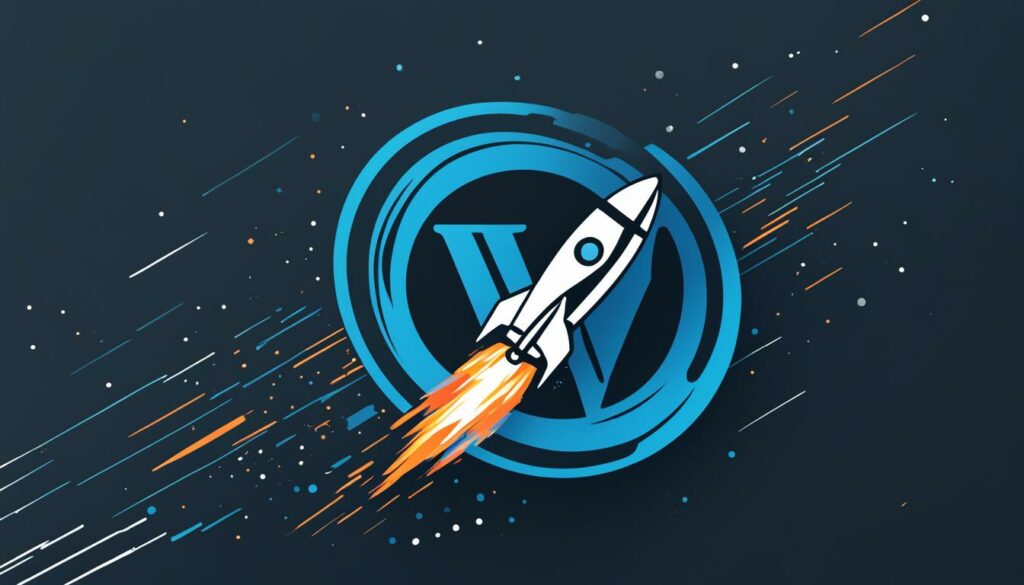Welcome to BoostedHost, your go-to resource for all things website hosting and optimization! In today’s digital landscape, website performance is crucial for attracting and retaining visitors. That’s where Content Delivery Networks (CDNs) come in. CDNs are a game-changer when it comes to website acceleration and content distribution, providing global content delivery and optimizing your website’s performance.
A CDN is a network of servers located around the world, strategically positioned to deliver website content to users from the closest server. By minimizing the distance between visitors and your website’s origin servers, CDNs drastically reduce loading times and enhance your website’s overall speed. CDNs also offer caching solutions and network optimization techniques to further boost performance.
Imagine a user trying to access your website from Japan, while your origin server is located in the United States. Without a CDN, the data has to travel a long distance, resulting in slower loading times. But with a CDN in place, the content is delivered from an edge server in Japan, significantly reducing the distance traveled and enhancing the user experience.
Key Takeaways:
- Content Delivery Networks (CDNs) improve website performance and user experience.
- CDNs consist of a network of servers located around the world to deliver content from the closest server to users.
- CDNs minimize loading times by reducing the distance data has to travel.
- Utilizing a CDN can optimize your website’s performance and enhance user experience.
- BoostedHost offers optimized WordPress Hosting for optimal performance with CDNs.
Ready to enhance your hosting with a CDN? Sign up for BoostedHost’s WordPress Hosting now through this link and experience the benefits firsthand.
What Is a CDN?
A CDN, or content delivery network, is a distributed system of servers designed to deliver web content to users based on their geographic location. It consists of origin servers, which host the actual website content, and edge servers, located closer to end users, that store and deliver the content quickly. These edge servers are located in data centers called points of presence (PoPs).
When a user requests content from a website, the CDN reads their IP address and determines their location. It then routes the request to the closest edge server, improving loading times and user experience. CDNs can deliver various types of content, including webpages, images, videos, and more.
| CDN Components | Description |
|---|---|
| Origin Servers | Host the actual website content. |
| Edge Servers | Store and deliver content quickly to end users. |
| Points of Presence (PoPs) | Data centers where edge servers are located. |
How Does a CDN Work?
CDNs work by utilizing the geographical distribution of servers and caching technology. When you visit a website using a CDN, the CDN analyzes your IP address to determine your location. It then directs the request to the closest edge server, which stores a cached version of the website’s content.
This cached content can be quickly delivered to you, reducing the loading times and providing a better user experience. The CDN updates its cache regularly to ensure the content is always up to date.
By delivering content from edge servers instead of the origin server, CDNs minimize the distance data has to travel, resulting in faster loading times and improved website performance.

CDNs minimize the distance data has to travel, resulting in faster loading times and improved website performance.
Benefits of Using a CDN
Utilizing a CDN for your website offers numerous benefits. One of the main advantages is the reduction in website load times. By serving content from edge servers closer to users, CDNs enable faster loading times, improving user experience and reducing bounce rates.
CDNs also help minimize downtime by distributing traffic across multiple servers, ensuring high availability even if one server goes down. This downtime reduction ensures that your website remains accessible to users at all times, avoiding potential loss of traffic and revenue.
In addition, CDNs enhance data security. With the rise of cybersecurity threats, protecting your website against DDoS attacks and other common threats is crucial. CDNs offer comprehensive security measures that safeguard your website and user data, providing peace of mind for both you and your visitors.
Furthermore, CDNs can reduce bandwidth costs. By offloading traffic from the origin server and distributing it across edge servers, CDNs help optimize bandwidth consumption, resulting in lower hosting expenses. This cost-saving advantage is especially beneficial for websites that experience high levels of traffic and consume significant bandwidth.
Overall, using a CDN can greatly enhance user experience on your website. Faster loading times, reliable performance, and improved security contribute to a positive user experience, increasing user engagement and satisfaction. A satisfied user is more likely to stay on your website, explore its content, and potentially convert into a customer or a loyal audience member.
Lastly, incorporating a CDN can also impact your search engine rankings. Website speed is a crucial factor considered by search engines when ranking web pages. By improving website load times, CDNs can positively influence your search rankings, helping your website appear higher in search engine results pages (SERPs) and attracting more organic traffic.
Setting Up a CDN
Setting up a CDN for your website is a crucial step in improving its performance and optimizing user experience. By leveraging the power of a content delivery network (CDN), you can enhance website speed, reduce latency, and ensure faster content delivery to visitors worldwide.
Before diving into the CDN setup process, you need to analyze your website and determine if a CDN is already integrated or if you need to set up one from scratch. Conducting a thorough website analysis will help you understand your current network infrastructure and identify areas for improvement.
There are several tools available, such as CDN Finder, that can assist in checking if a CDN is already active on your website. By using these tools, you can determine the status of your current CDN integration and proceed accordingly.
Once you’ve established the need for a CDN, the next step is choosing the right CDN service for your website. You have two main options: a free CDN or a paid CDN.
If you have a small to medium-sized website, a free CDN like Cloudflare could be a suitable choice. Cloudflare offers basic features and is user-friendly, making it easy to set up and configure. With its global network of edge servers, Cloudflare ensures faster content delivery and enhanced website performance.
On the other hand, if your website experiences high levels of traffic or demands advanced features, a paid CDN like Google Cloud CDN might be the better option. Google Cloud CDN provides advanced caching capabilities and automated scaling to handle peak traffic periods effectively. With its extensive network, your content can be delivered to users across the globe quickly and efficiently.
Configuration Process
The configuration process for setting up a CDN depends on your hosting provider and the CDN service you choose. Generally, the setup involves modifying DNS settings or changing domain nameservers to enable the CDN’s functionality.
Here’s a step-by-step guide to help you set up a CDN:
- Analyze your website to determine the need for a CDN.
- Choose a suitable CDN service based on your website’s requirements.
- Sign up for the chosen CDN service and obtain the necessary credentials.
- Configure DNS settings or change domain nameservers to enable the CDN integration. Your CDN provider will provide detailed instructions for this step.
- After completing the configuration process, verify that the CDN is working correctly by running tests and monitoring the website’s performance.
It’s worth mentioning that different hosting providers may have specific instructions for CDN integration. Therefore, it’s essential to consult your hosting provider’s documentation or support team to ensure a seamless setup process.
Remember, setting up a CDN is just the beginning. Continuous monitoring and optimization are necessary to ensure the CDN’s effectiveness in improving website performance and delivering content efficiently.

With a properly set up CDN, you can enjoy the benefits of accelerated website speed, reduced latency, and global content delivery. Now that you have a better understanding of the CDN setup process, let’s explore some popular CDN providers in the next section.
CDN Providers to Consider
When selecting a CDN for your website, you have several options to consider. Each CDN provider offers unique features and benefits that can enhance your website’s performance and user experience. Take a look at the following CDN providers and their offerings:
1. Cloudflare

Cloudflare is a popular free CDN that provides a wide range of features, including robust DDoS protection, global coverage with numerous edge locations, and a user-friendly dashboard. It offers comprehensive caching solutions and supports SSL/TLS encryption, ensuring secure content delivery to your visitors.
2. Google Cloud CDN
Google Cloud CDN integrates seamlessly with the Google Cloud Platform, making it an excellent choice for users already utilizing Google services. It provides global edge locations for quick and efficient content delivery, enhancing website performance. Google Cloud CDN also offers advanced caching techniques and automatic scaling to handle traffic spikes effectively.
3. Akamai
Akamai is a leading CDN provider that specializes in delivering media content, making it an ideal choice for websites with video streaming or high-quality images. It offers advanced optimization options to ensure smooth content delivery and exceptional user experience. Akamai’s extensive network of servers ensures reliable and fast content distribution worldwide.
4. Fastly
Fastly is known for its high-performance CDN platform that caters to the needs of modern websites. It offers robust caching solutions and efficient content delivery, ensuring lightning-fast load times for your visitors. Fastly provides cutting-edge edge computing capabilities, enabling real-time content customization and personalization.
5. Microsoft Azure CDN
Microsoft Azure CDN is fully integrated with Azure services, providing seamless scalability, reliability, and global edge locations. It offers fast content delivery to users across the globe, enhancing website performance and user experience. Microsoft Azure CDN also provides easy integration with Azure services, making it a convenient option for users already utilizing Microsoft’s cloud platform.
When selecting a CDN provider, consider their unique features, pricing models, and compatibility with your website’s requirements and hosting platform. Each provider offers different advantages, so choose the one that aligns best with your website’s needs and objectives.
CDN Integration with Hosting
While a CDN can greatly improve website performance, it does not replace web hosting. Web hosting providers store website files on servers located in data centers. The geographic proximity between visitors and hosting servers affects website loading times. CDNs complement hosting services by delivering content from edge servers closer to users, overcoming the limitations of server location. CDNs can also help websites hosted on shared or free hosting plans by reducing resource usage, optimizing bandwidth consumption, and preventing resource limit exceedance during traffic spikes. Additionally, CDNs contribute to better website uptime by distributing incoming requests across multiple CDN servers, reducing the impact of hardware failures on site traffic.
Integrating a CDN with your hosting provider can enhance your website’s performance, user experience, and overall success. By leveraging a CDN’s global content delivery capabilities, you can overcome the limitations posed by physical server locations. CDNs optimize website performance by caching content and delivering it from edge servers located closer to your visitors. This reduces latency and minimizes loading times, resulting in faster page loads and improved user experience.
CDNs also help websites hosted on shared or free hosting plans by offloading resource-intensive tasks such as content delivery and caching to the CDN network. This reduces the strain on your hosting server, allowing it to focus on processing dynamic content and running your website’s backend operations more efficiently.
By integrating a CDN with your hosting provider, you can enjoy the following benefits:
- Improved website performance and loading times
- Optimized bandwidth consumption
- Reduced resource usage
- Enhanced website uptime and resilience to hardware failures
If you’re looking for a reliable hosting provider that seamlessly integrates with CDNs, we recommend BoostedHost’s WordPress Hosting. With BoostedHost, you can take advantage of their advanced CDN integration to achieve optimal website performance. Sign up now through this link to boost your website’s speed and deliver an exceptional user experience.
Integrating a CDN with your hosting provider not only improves website performance but also enhances your website’s resource efficiency, user experience, and overall reliability. By leveraging the power of CDNs, you can overcome the limitations of server location, optimize bandwidth consumption, reduce resource usage, and ensure higher website uptime even in the face of hardware failures. Don’t miss out on the opportunity to enhance your website’s speed and user experience by integrating a CDN with your hosting solution.
How a CDN Improves Website Speed
CDNs play a crucial role in improving website speed and performance. By leveraging caching, delivering static content from edge servers, and reducing the workload on the origin server, CDNs significantly enhance the overall website speed and user experience.
When a user requests content, a CDN server transfers the files from the origin server and caches a copy in the nearest edge server. This cached content is then readily available for subsequent requests, reducing loading times and improving website speed. By minimizing the distance between users and the servers hosting the content, CDNs ensure faster content delivery, thereby reducing latency and enhancing user experience.
CDNs are particularly effective when it comes to delivering static content such as images, CSS files, and JavaScript files. These files don’t change frequently, and serving them from closely located edge servers optimizes the content delivery process. As a result, users experience faster page load times and smoother browsing experiences.
The caching mechanism employed by CDNs also plays a vital role in reducing the server workload. By delivering content from the nearest edge server, CDNs decrease the number of requests made to the origin server. This reduced server workload allows the origin server to handle other resource-intensive tasks more efficiently, improving overall website performance and scalability.
By distributing content and reducing the reliance on the origin server, CDNs help websites handle high traffic loads and sudden spikes in user demand. Instead of overwhelming a single server, CDNs distribute the load across multiple edge servers, ensuring website availability and preventing server congestion.
Implementing a CDN can lead to significant improvements in website speed, resulting in enhanced user experience, lower bounce rates, higher customer satisfaction, and better search engine rankings. The combination of caching, reduced server workload, and efficient content delivery enables CDNs to optimize website speed and ensure fast, reliable access to web content regardless of user location.
Conclusion
Content Delivery Networks (CDNs) are powerful tools for optimizing website performance and enhancing user experience. By utilizing a CDN, you can significantly improve website loading times and provide a seamless browsing experience for your visitors. CDNs deliver content from edge servers located closer to users, reducing the distance data has to travel and resulting in faster loading times. This optimization leads to enhanced website speed and overall performance.
In addition to improving loading times, CDNs offer other significant benefits. They reduce downtime by distributing traffic across multiple servers, ensuring high availability even if one server goes down. CDNs also enhance data security by protecting against common threats like DDoS attacks, safeguarding your website and user information. By offloading traffic from your origin server, CDNs can help lower bandwidth costs, making them a cost-effective solution for website owners.
Setting up a CDN involves analyzing your website, choosing a suitable CDN provider, and configuring the necessary settings based on your hosting platform. By integrating a CDN into your hosting strategy, you can elevate your website’s performance and provide an exceptional user experience. We recommend BoostedHost’s WordPress Hosting for optimal performance. Sign up now through this link to experience the benefits of a CDN and take your website to new heights.
FAQ
Q: What is a content delivery network (CDN)?
A: A CDN is a distributed system of servers that delivers web content to users based on their geographic location. It consists of origin servers, which host the website content, and edge servers, located closer to users, that store and deliver content quickly.
Q: How does a CDN work?
A: When a user requests content from a website, the CDN analyzes their IP address and determines their location. It then routes the request to the closest edge server, which stores a cached version of the content. This cached content is quickly delivered to the user, reducing loading times and improving user experience.
Q: What are the benefits of using a CDN?
A: Using a CDN can reduce website load times, minimize downtime, enhance data security, lower bandwidth costs, and improve user experience and search engine rankings.
Q: How do I set up a CDN?
A: To set up a CDN for your website, analyze your website to determine if a CDN is already integrated or needed. Choose between a free CDN or a paid service based on your website’s needs. Configure settings or change domain nameservers depending on your hosting provider, and run tests to ensure proper functionality.
Q: Which CDN providers should I consider?
A: Some popular CDN providers to consider are Cloudflare, Google Cloud CDN, Akamai, Fastly, and Microsoft Azure CDN. Each provider offers different features and pricing models, so consider your website’s requirements when selecting a CDN.
Q: How does a CDN integrate with web hosting?
A: A CDN complements web hosting by delivering content from edge servers closer to users, improving website speed and user experience. CDNs can also help websites hosted on shared or free hosting plans by optimizing bandwidth consumption and reducing resource usage.
Q: How does a CDN improve website speed?
A: CDNs improve website speed by caching static content and delivering it from edge servers. This reduces the workload on the origin server and reduces the time it takes to serve content to users. By caching and distributing content, CDNs significantly enhance overall website speed.
Q: Are CDNs a replacement for web hosting?
A: No, CDNs do not replace web hosting. They complement hosting services by delivering content from edge servers, overcoming limitations of server location. CDNs also improve website uptime by distributing requests across multiple servers.












